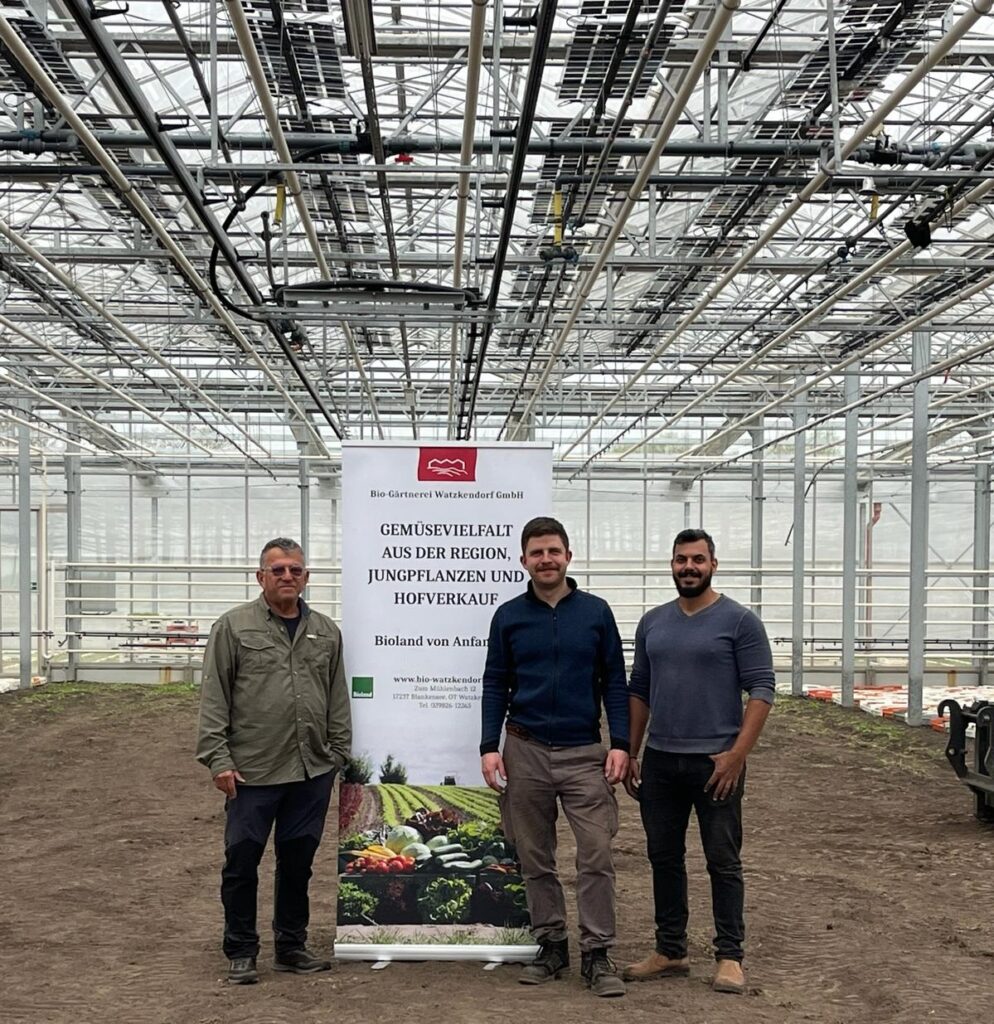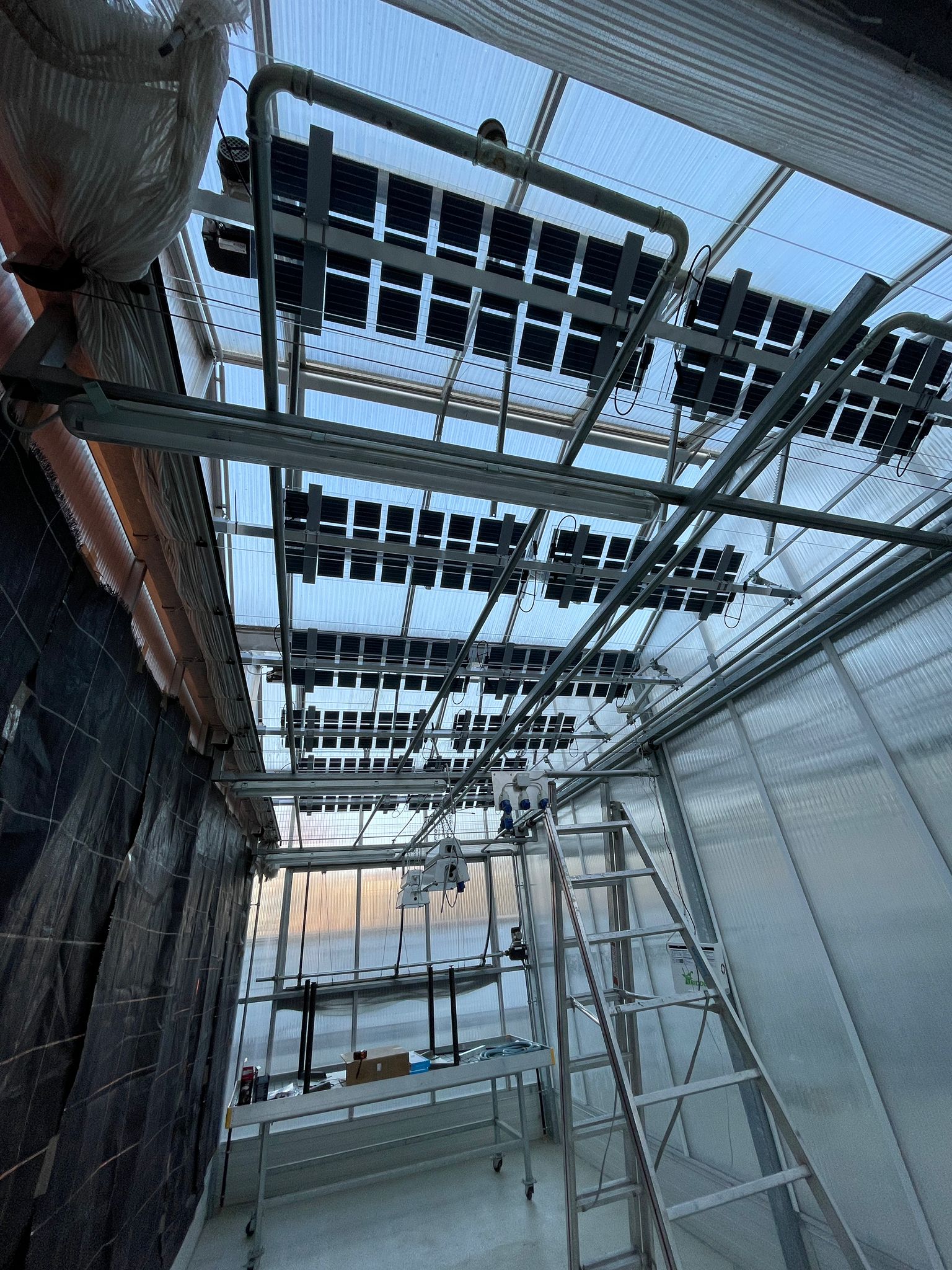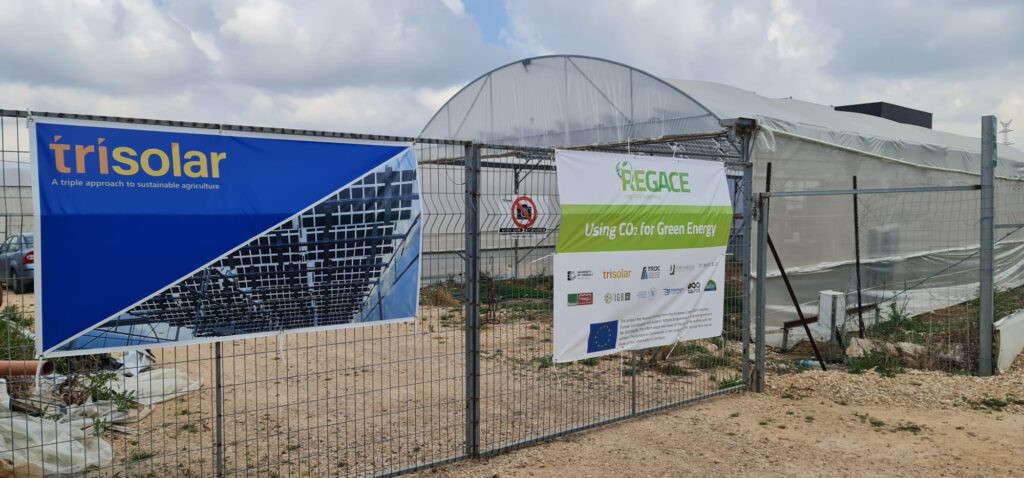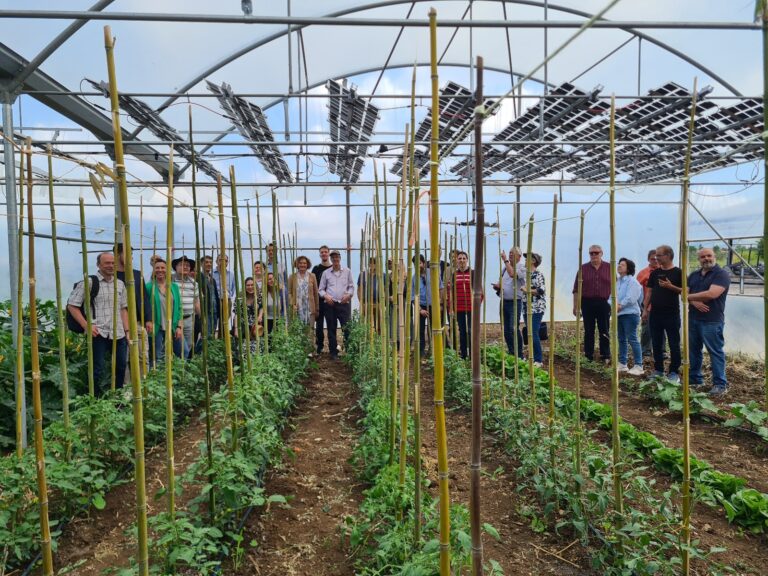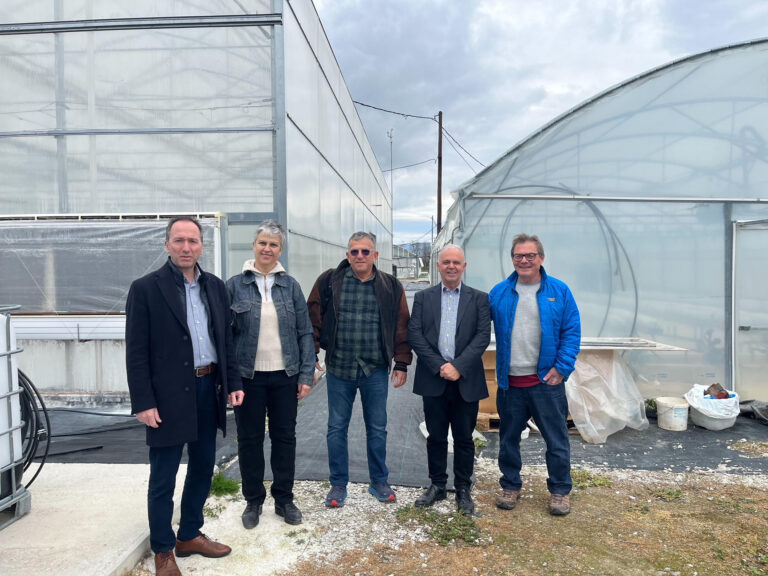By Michael Eilan
At long last, the Trisolar team got a taste of what it was like to install a responsive tracking system in a working farm operated by REGACE German partner Bio-Gärtnerei Watzkendorf.
Conditions in a working farm are very different from a research center or university lab, starting with the fact that there is a very narrow time window for the installation process depending on planting schedules. Happily, this took place after the mechanical system was installed in REGACE partner The University of Natural Resources and Life Sciences (BOKU) and the last shipment of panels arrived at the Al-Zahrawi Society greenhouses (which are more extensive than other partners).
With a huge amount of very efficient help from the Bio-Gärtnerei Watzkendorf team led by Max Liebrich, Trisolar’s CEO Ronen Katz and Eng. Raoof Korabi, who installed the system in a challenging environment over four meters high within the allotted time slot.
The installation in this highly sophisticated organic farm is of particular importance for the REGACE consortium because it is here, at a latitude of 53.3°, two hours’ drive north of Berlin, that the basic premise of REGACE will be tested at the utmost.
This basic REGACE premise states that by using CO2 enrichment in the Trisolar responsive tracking system electricity and crop yields can be increased to a degree that would make greenhouse agrivoltaics viable even in northern climates.
Bio-Gärtnerei Watzkendorf is a great partner for REGACE since, as an organic farm, they have extensive experience in using CO2 enrichment with organic means. Trying out the responsive tracking system in their greenhouse promises the best possible results for this study.
All of this is especially relevant in Germany where the government is planning major schemes to make agrivoltaics play a central part in the plan to make Germany carbon neutral by 2045, while on the other hand German farmers demonstrate an exceptional willingness to embrace agrivoltaics.
A study based on a farmer survey by the Fraunhofer Institute for Solar Energy showed that a very high 72.4 percent would be willing to use agrivoltaics.
This survey, based on very detailed questions answered by 214 farmers, is interesting because it examined in depth both the motivations of farmers to consider agrivoltaics installations but also the obstacles they perceive in this arena.
Unsurprisingly, the attractions of an extra source of income was specified by over 80% either agreeing or strongly agreeing with this as a motivation. But the ability to contribute towards the expansion of renewable energy was cited by a total of 60% of the German farmers as a motivating factor and even in Germany the fact that Agrivoltaics provides sun protection was cited by 40% of the respondents.
Another issue of interest in the study was the perceived obstacles farmers see towards the installation of agrivoltaics. In terms of operations the main perceived obstacle is the use of machinery in agrivoltaic installations. But the main perceived issue is bureaucracy, which means that agrivoltaic vendors will need to help farmers overcome this issue.
Now that the mechanical system has been installed in Vienna we have to complete the controller installation there and install systems in Humboldt-Universität in Berlin and in the University of Thessaly in Volos in the next few weeks. This means we can finally get down to the real work of examining the effects of CO2 enrichment in greenhouses using the Trisolar responsive tracking system.
